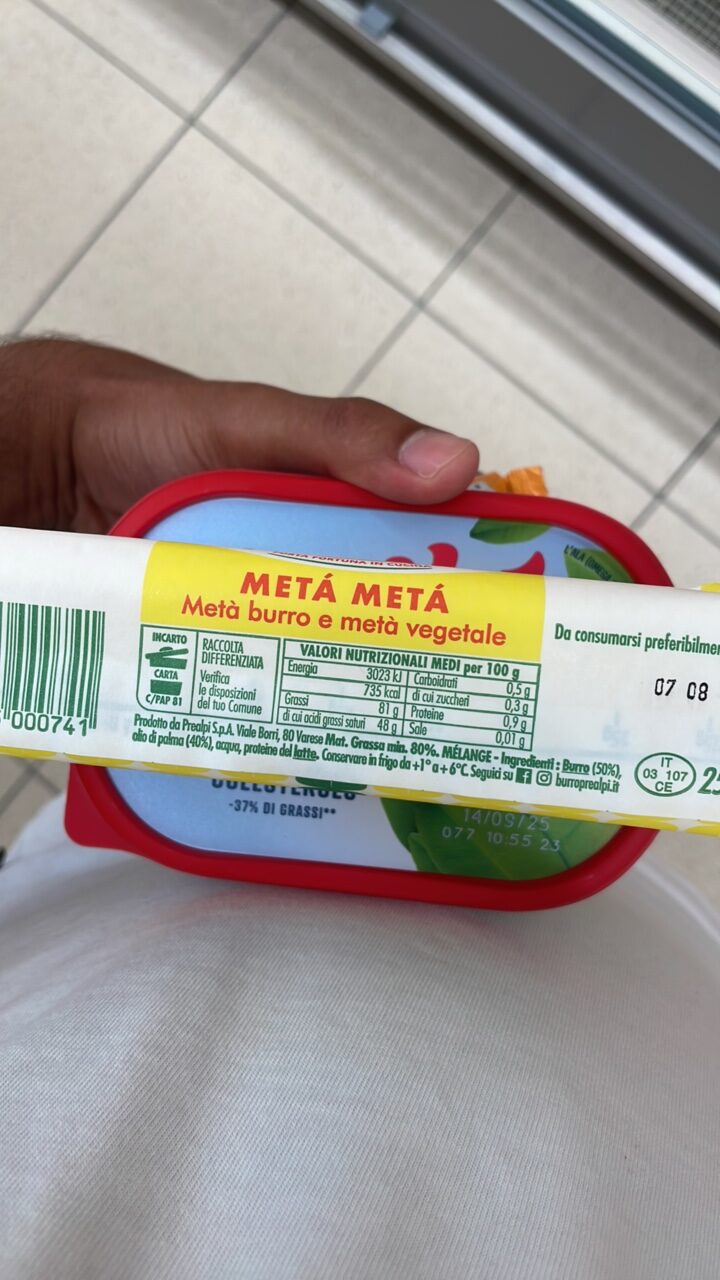
Barcode: 8000415000741
metà metà burro e metà vegetale
HALAL
📝 Reason: Based on the provided strict rules and ingredient analysis, most ingredients are Halal except for items with unclear or ambiguous sourcing such as ‘mélange’ and ‘80%’, which must be classified as Doubtful (2). No Haram (forbidden) ingredients or Haram Ecodes have been found in the list. As per Islamic dietary law (Quran 5:3), Muslims must avoid doubtful matters. See also IFANCA guidelines and product ingredient definitions.
🏷️ Category: Butter
📄 Certificates: 37% Di Grassi, Vegetarisch
Ingredients:
Details
Understanding the Halal Status of metà metà burro e metà vegetale
In an increasingly diverse food market, ensuring that products meet Halal standards is paramount for consumers adhering to Islamic dietary laws. Today, we will delve into whether the product metà metà burro e metà vegetale qualifies as Halal, examining its ingredients, sources, and certifications.
Product Overview
metà metà burro e metà vegetale is primarily composed of butter and plant-based ingredients, marketed for its unique blend. With a barcode of 8000415000741, this product requires careful analysis to confirm its compliance with Halal regulations.
Ingredient Breakdown
The following ingredients are included in the product:
- Burro (50%)
- Mélange
- Burro (80%)
- Olio di palma (40%)
- Acqua
- Proteine del latte
Detailed Ingredient Halal Status
- Burro (50%): Traditionally made from milk, butter is generally Halal if sourced from Halal-certified dairy. For more information, refer to Eat Halal.
- Mélange: This term means ‘mixture’ and lacks specificity regarding its contents. Due to this ambiguity, it is classified as Doubtful. Without clear sourcing, consumers should be cautious.
- Burro (80%): Similar to the first instance of butter, this ingredient is acceptable provided it adheres to Halal standards. More insights can be found at Eat Halal.
- Olio di palma (40%): Palm oil is plant-based and considered Halal. Its non-controversial nature makes it widely accepted in Halal products. Learn more at Halal Trip.
- Acqua: Water is always Halal, adding to the product’s compliance.
- Proteine del latte: Milk proteins derived from Halal sources are accepted as Halal. For further guidance, visit Halal HMC.
Final Thoughts on Halal Compliance
Our comprehensive analysis suggests that while most ingredients in the metà metà burro e metà vegetale are Halal, there are doubts surrounding the mélange and 80% indicators due to their ambiguous nature. This necessitates caution for Muslims choosing this product. As emphasized in the Quran (5:3), avoiding doubtful matters is crucial.
Certifications: The product carries a 37% Di Grassi, Vegetarisch, which reflects a commitment to vegetarian standards but does not specifically certify Halal status.
Conclusion
Before indulging in metà metà burro e metà vegetale, consumers focused on Halal compliance should consider the ingredients’ origins, particularly those labeled as doubtful. Always refer to reliable Halal certification sources to ensure dietary adherence. By informing yourself, you can make better choices aligned with your values.
